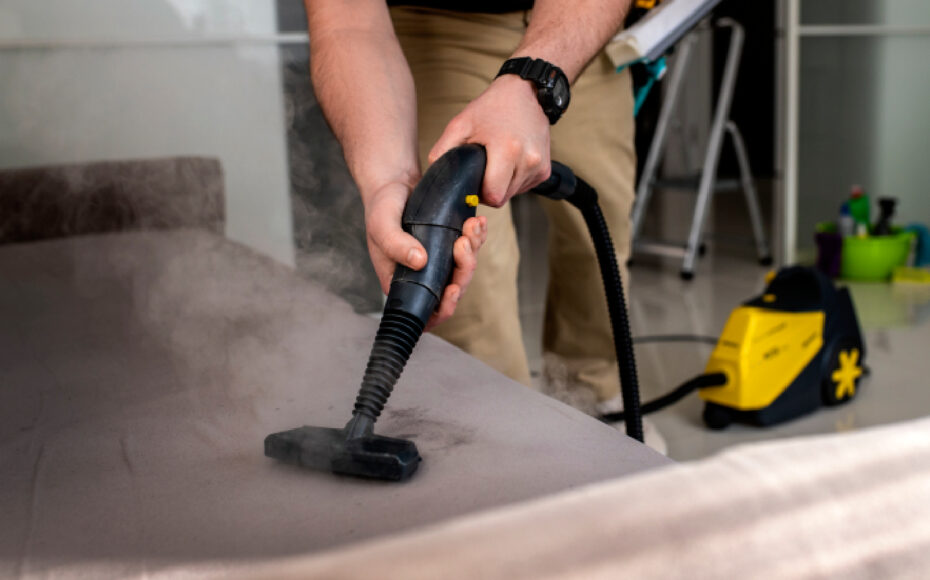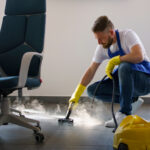Introduction
Workplace hygiene is not just about creating a good impression. It directly impacts employee health, morale, and overall productivity. In any business setting, maintaining cleanliness on a daily basis ensures a safe and comfortable environment where employees can thrive. Simple hygiene practices carried out consistently prevent the spread of illnesses, reduce absenteeism, and foster professionalism.
This blog offers practical and easy-to-follow workplace hygiene tips that organizations can apply every day. By following these strategies, businesses can build a culture of cleanliness that benefits both employees and clients.
Why workplace hygiene matters
Health and safety
Workplaces are shared environments, which makes them hotspots for germs and bacteria. A lack of hygiene leads to illnesses that can spread quickly among employees. Regular cleaning, hand hygiene, and sanitization reduce these risks significantly.
Employee morale and productivity
When employees work in a clean and organized environment, they feel more valued and motivated. A hygienic workplace reduces stress and distractions, allowing teams to stay focused and efficient.
Professional image
Clean workplaces leave a strong impression on clients, visitors, and stakeholders. A tidy office signals professionalism and commitment to quality.
Common hygiene challenges in workplaces
- Shared desks and workstations that accumulate dust and germs
- Restrooms that require frequent cleaning
- Break rooms and kitchens prone to spills and food waste
- High-touch surfaces like doorknobs, printers, and phones
- Employees not following proper hygiene practices
Addressing these challenges requires both professional cleaning support and employee cooperation.
Daily hygiene tips for employees
Keep your workstation clean
- Wipe your desk, keyboard, and mouse with disinfectant wipes daily.
- Avoid eating meals at your desk to reduce crumbs and spills.
- Organize documents and files to prevent clutter.
Practice good hand hygiene
- Wash hands frequently with soap and water, especially before meals and after restroom use.
- Use hand sanitizers when soap and water are not available.
- Avoid touching your face, especially eyes, nose, and mouth, during work.
Dispose of waste properly
- Use designated bins for general waste and recyclables.
- Empty personal trash regularly to avoid odors and pests.
- Do not leave food wrappers or used tissues on desks.
Respect shared spaces
- Clean up after using break rooms or kitchens.
- Wipe microwave and coffee machine handles after use.
- Keep meeting rooms tidy for the next team.
Hygiene practices for employers
Provide adequate cleaning supplies
- Place hand sanitizers at entrances, meeting rooms, and workstations.
- Keep disinfectant wipes, tissues, and paper towels available.
- Stock restrooms with soap, hand dryers or towels, and toilet paper.
Create a cleaning schedule
- Assign daily cleaning for high-touch surfaces and restrooms.
- Schedule weekly deep cleaning for carpets, furniture, and air vents.
- Ensure staff rooms and kitchens are sanitized regularly.
Encourage employee participation
- Educate staff on hygiene practices during onboarding.
- Display posters promoting hand hygiene and cleanliness.
- Recognize and reward employees who maintain clean workspaces.
Hygiene in specific workplace areas
Workstations
- Daily desk wiping
- Cable organization to prevent dust buildup
- Regular computer screen cleaning
Restrooms
- Multiple cleanings daily
- Stocked with essentials
- Air fresheners to maintain freshness
Break rooms and kitchens
- Fridge cleaning every week
- Daily counter and sink sanitization
- Rules against leaving dirty dishes overnight
Reception and common areas
- Regular dusting and vacuuming
- Sanitizing reception desks, phones, and sign-in devices
- Keeping floors clean and clutter-free
Advanced hygiene tips
Indoor air quality
- Invest in air purifiers with HEPA filters.
- Maintain HVAC systems regularly to prevent dust circulation.
- Add plants that improve air quality.
Touch-free technology
- Use sensor-based taps and soap dispensers in restrooms.
- Install automatic hand dryers.
- Provide touchless bins with foot pedals.
Personal hygiene policies
- Encourage employees to stay home when unwell.
- Provide masks and sanitizers during flu seasons.
- Set clear hygiene expectations in company policy manuals.
Benefits of maintaining daily hygiene
Fewer sick days
Healthy employees take fewer leaves, ensuring consistent productivity.
Improved teamwork
Clean shared spaces encourage collaboration and build mutual respect.
Higher client satisfaction
Clients notice and appreciate a hygienic office, leading to stronger business relationships.
Cost savings
Preventive hygiene reduces maintenance costs for office furniture, carpets, and electronics.
How professional cleaning services support daily hygiene
Consistent results
Professional cleaners ensure thorough cleaning beyond what employees can manage.
Expertise and equipment
They use industrial-grade products and advanced tools like electrostatic sprayers.
Customized cleaning schedules
Services can be tailored to match the office’s daily, weekly, and monthly hygiene needs.
Compliance with safety standards
Professional cleaners follow strict health and safety regulations, ensuring compliance with workplace guidelines.
Building a culture of cleanliness
Daily hygiene is not just about tasks—it is about habits. Creating a culture of cleanliness requires leadership commitment, employee education, and continuous reinforcement. Managers should lead by example, employees should be given the right tools, and professional cleaners should be trusted with deeper maintenance.
Practical checklist for daily workplace hygiene
- Wipe all desks, keyboards, and phones
- Empty trash bins and replace liners
- Refill restroom supplies
- Sanitize door handles and light switches
- Clean kitchen counters and appliances
- Vacuum floors and carpets
- Ensure air circulation is fresh and healthy
Conclusion
Workplace hygiene is a collective responsibility. With simple daily practices, businesses can maintain a clean and healthy environment that benefits employees and impresses clients. From individual actions like wiping desks to employer initiatives such as providing sanitizers and scheduling professional cleaning, every effort counts. Maintaining cleanliness every day is not complicated. It requires consistency, awareness, and a commitment to shared well-being. By following these easy tips, workplaces can create a culture of hygiene that supports productivity, health, and long-term success.




